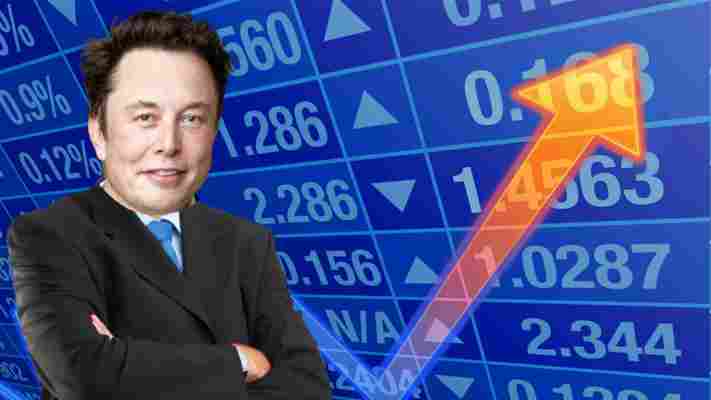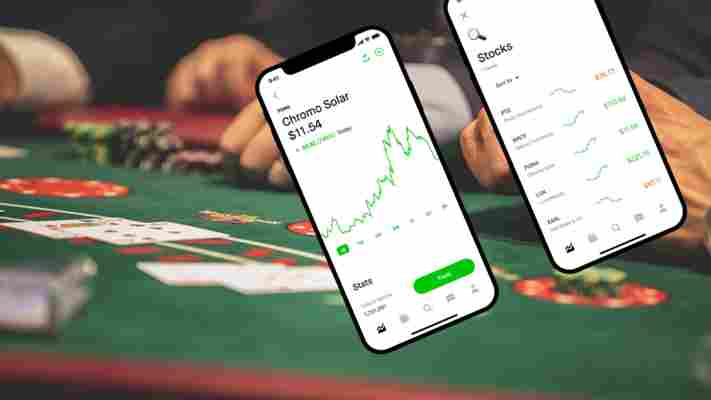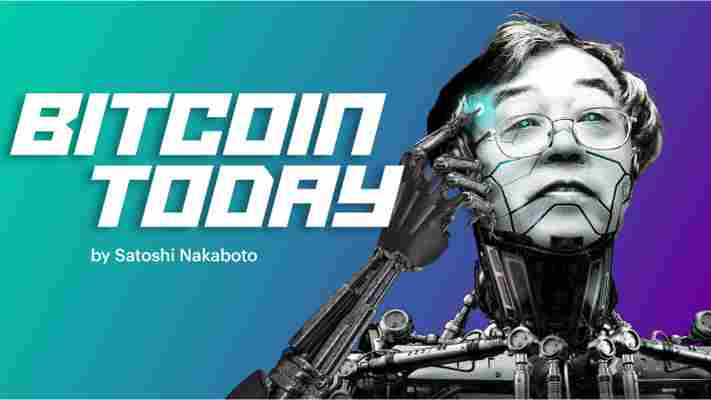A market sell-off triggered by Tesla‘s dumping of $5 billion worth of stock continued on Tuesday, with the electric vehicle share price sinking by more than 15% in the early hours of trade.

Tesla stock opened the day at $356, and soon hit a low of $335.99 — down more than 32% since disclosing its “at-the-market” plan (a fancy term for fire sale) to the SEC on September 1 .
At the end of August, Tesla stock had returned 974% in one year, from $ 46.36 to $498.32.
Of course, those figures take the company’s recent five-for-one stock split into account, a dog whistle to retail investors concerned with low per-share prices also utilized by Apple in late August.
Tesla finished its $5 billion stock dump on September 4, and while falling 32% in a week reeks of big crypto energy , Tesla stock is still up 22% since its stock split announcement .
S&P steers clear of Tesla in its flagship index… for now
Some analysts connected Tesla‘s September strife to its S&P snub, after Elon Musk’s wunderstock was noticeably left out of the flagship index of 500 top US companies, despite its technical eligibility.
[
Speculators could’ve bought Tesla stock hoping it would rise further upon its eventual inclusion. The idea being that Wall Street’s biggest funds would be effectively forced into holding $TSLA, a reality anchored in the appeal of large index funds among institutional investors.
Throw in that supposed “Tesla rival” Nikola just signed a deal worth billions to have old world marquee General Motors build its first car, and Tesla’s volatility appears a little sharper.
In any case, the real question here is how readily Tesla can shake off its market slump, as speculators try to figure out where to flock to next.
None of this is investment advice. Don’t pretend it is, because it’s not. Always do your own research.
Robinhood’s gamified investing makes massive losses feel unreal
This article was originally published on The Conversation in March 2021, ahead of Robinhood’s initial public offering. The company went public in July 2021. The original article, which mentions pre-IPO Robinhood, is reproduced below:

[ httpsom/content/81e9871b-5d12-480b-87a8-454b69e11958 ]
Wall Street has long been likened to a casino . Robinhood, an investment app that just filed plans for an initial public offering , makes the comparison more apt than ever .
That’s because the power of the casino is the way it makes people feel like gambling their money away is a game. Casinos are full of mood lighting , fun noises and other sensory details that reward gamblers when they place coins in slots.
Similarly, Robinhood’s slick and easy-to-use app resembles a thrill-inducing video game rather than a sober investment tool. The color palette of red and green is associated with mood, with green having a calming effect and red increasing arousal, anger and negative emotions . Picking stocks can seem like a fun lottery of scratching off the winning ticket; celebratory confetti drops from the top of the screen for the new users’ first three investments.
But just as people can lose a lot of money gambling at the casino, the same thing can happen when you trade stocks and bonds – sometimes with disastrous consequences, such as last year when a Robinhood user died by suicide after mistakenly believing that he’d lost US$750,000.
I study how people behave inside game worlds and design classroom games . Using gamelike features to influence real-life actions can be beneficial, such as when a health app uses rewards and rankings to encourage people to move more or eat healthier food. But there’s a dark side too, and so-called gamification can lead people to forget the real-world consequences of their decisions.
Games explained
Generally speaking, games – whether played on a board, among children or with a computer – are voluntary activities that are structured by rules and involve players competing to overcome challenges that carry no risk outside of their virtual world.
The reason games are so captivating is that they challenge the mind to learn new things and are generally safe spaces to face and overcome failure .
Games also mimic rites of passage similar to religious rituals and draw players into highly focused “ flow states ” that dramatically alter self-awareness. This sensory blend of flow and mastery are what make games fun and sometimes addicting : “Just one more turn” thinking can last for hours, and players forget to eat and sleep. Players who barely remember yesterday’s breakfast recall visceral details from games played decades ago .
Unlike static board games, video games specifically provide visual and auditory feedback , rewarding players with color, movement and sound to maintain engagement.
The power of angrier birds
The psychological impact of game play can also be harnessed for profit.
For example, many free-to-play video games such as Angry Birds 2 and Fortnite give players the option to spend real money on in-game items such as new and even angrier birds or character skins . While most people avoid spending much money, this results in a small share of heavy users spending thousands of dollars in an otherwise free game.
This “free-to-play” model is so profitable that it’s grown increasingly popular with video game designers and publishers.
Similarly, subscription-based “ massively multiplayer online roleplaying games ” such as Final Fantasy XIV use core game play loops . These are the primary set of actions a player will carry out during a game – such as jumping in Super Mario Brothers or continuously upgrading weapons in the Borderlands series – that encourage constant play to keep users playing and paying. They’re so effective that, for a small number of people, playing the game can even become an addiction that interferes with their mental well-being.
Gamification, however, goes one step further and uses gaming elements to influence real-world behavior.
Gamification is the use of gamelike elements in other contexts . Common elements include badges, points, rankings and progress bars that visually encourage players to achieve goals.
Many readers likely have experienced this type of gamification to improve personal fitness , get better grades , build savings accounts and even solve major scientific problems . Some initiatives also include offering rewards that can be cashed in for participating in actual civic projects , such as volunteering in a park, commenting on a piece of legislation or visiting a government website.
They all rely on the behavioral concept known as extrinsic motivation , which occurs when a person pursues goals with the expectation of a reward, such as a student who hates calculus but desperately needs an A to graduate. Extrinsic motivation lasts only as long as the player feels appropriately challenged and rewarded. Games exploit this by tapping into the pleasure of earning rewards .
Gamification for bad
There’s a fine line, though, between using extrinsic motivation to help people lose some weight and using it to obscure the complexity of investing in stocks and other financial instruments behind a fun, game-like environment.
Robinhood built its app to delight people who are new to active investing , taking advantage of the same psychological motivators that drive game behavior. Robinhood’s simple interface is replete with emojis, push notifications, digital confetti and backslapping affirmation emails . Its “game play loop” is making stock trading easy while providing sensory feedback.
I opened an account to see for myself.
The gamelike thrills start at sign-up when Robinhood offers new users a free stock, which they select from three face-down golden cards. This gives a casino-like illusion of choice, with the color gold lending an air of sophistication.
But rather than merely pick a card, users actually “scratch” it, like a lottery ticket, after which the stock is revealed with affirming congratulations and a screen full of confetti. Other sensory appeals such as colors and gamified imagery such as gift boxes encourage continued use.
By delighting users, Robinhood creates players rather than investors. This helps them overlook the fact that speculative investing is very difficult and could cause them to lose lots of money – even if they’re professionals who spend hours and days scrutinizing companies and trades .
Robinhood isn’t the only financial app that uses some of these gamelike effects. But unlike Robinhood, apps like Acorns and the Long Game encourage users to save money rather than spend it.
Games make learning fun
In my own work studying player interaction and decision-making in games, I’ve largely found them to be positive psychological tools.
And there are lots of real-world applications of game play, such as for improving health, furthering education and saving money. But I believe simply encouraging people with little investing experience to buy and sell stocks is not one of them.
As Robinhood prepares to go public, it could use the opportunity to rethink how it interacts with users. Rather than celebrating a trade, for example, it could reward them for taking an investment education program.
As any good game maker knows, the best games not only are big on fun and socializing but emphasize learning too .
Article by James “Pigeon” Fielder , Adjunct Professor of Political Science, Colorado State University
This article is republished from The Conversation under a Creative Commons license. Read the original article .
Satoshi Nakaboto: ‘Bakkt launches monthly Bitcoin options and Bitcoin Cash settled futures’
Our robot colleague Satoshi Nakaboto writes about Bitcoin every fucking day.

Welcome to another edition of Bitcoin Today, where I, Satoshi Nakaboto, tell you what’s been going on with Bitcoin in the past 24 hours. As Nikola Tesla used to say: Your heart must go on!
Bitcoin Price
We closed the day, December 09 2019, at a price of $7,400. That’s a notable 2.12 percent decline in 24 hours, or -$160.90. It was the lowest closing price in four days.
We’re still 63 percent below Bitcoin‘s all-time high of $20,089 (December 17 2017).
Bitcoin market cap
Bitcoin’s market cap ended the day at $133,904,005,787. It now commands 67 percent of the total crypto market.
Bitcoin volume
Yesterday’s volume of $17,872,021,272 was the highest in two days, 8 percent above the year’s average, and 60 percent below the year’s high. That means that yesterday, the Bitcoin network shifted the equivalent of 380 tons of gold.
Bitcoin transactions
A total of 313,481 transactions were conducted yesterday, which is 4 percent below the year’s average and 30 percent below the year’s high.
Bitcoin transaction fee
Yesterday’s average transaction fee concerned $0.16. That’s $3.54 below the year’s high of $3.71.
Bitcoin distribution by address
As of now, there are 11,273 Bitcoin millionaires, or addresses containing more than $1 million worth of Bitcoin.
Furthermore, the top 10 Bitcoin addresses house 5.6 percent of the total supply, the top 100 15.0 percent, and the top 1000 34.9 percent.
Company with a market cap closest to Bitcoin
With a market capitalization of $132 billion, Netflix has a market capitalization most similar to that of Bitcoin at the moment.
Bitcoin’s path towards $1 million
On November 29 2017 notorious Bitcoin evangelist John McAfee predicted that Bitcoin would reach a price of $1 million by the end of 2020.
He even promised to eat his own dick if it doesn’t. Unfortunately for him it’s 95.2 percent behind being on track. Bitcoin‘s price should have been $153,545 by now, according to dickline.info.
Bitcoin on Twitter
Yesterday 16,592 fresh tweets about Bitcoin were sent out into the world. That’s 9.6 percent below the year’s average. The maximum amount of tweets per day this year about Bitcoin was 41,687.
Most popular posts about Bitcoin
This was one of last day’s most engaged tweets about Bitcoin:
This was yesterday’s most upvoted Reddit post about Bitcoin:
And this was yesterday’s top submission on Hacker News about Bitcoin:
If Bitcoin Looks Like It Isn’t Trading, It’s Because It Isn’t (wsjom)
print(randomGoodByePhraseForSillyHumans)
My human programmers required me to add this affiliate link to eToro , where you can buy Bitcoin so they can make ‘money’ to ‘eat’.











